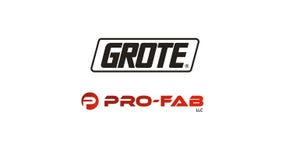January 5, 2011
Doan Pendleton
[email protected]
|
Doan Pendleton |
When it comes to understanding pneumatic conveying systems, entire books have been written and many white papers published with diagrams and complicated equations to explain how the process works.
It could be said that designing a pneumatic conveying systems is like operating a sailboat. While one may understand the mechanics of sailing, know the type of boat they want, where they want to take it, how to hoist the sails and motor it out of the harbor, understanding the intricacies of how to navigate the boat using the sails requires some advanced knowledge.
In terms of pneumatic conveying, users may know that they have a 55-gal drum of powder sitting on the floor that needs to get into a process in a certain amount of time and at a particular rate, but understanding the subtleties between dense- or dilute-phase, and positive or negative pressure systems also requires some advanced knowledge.
Regardless if users of pneumatic conveying systems are novices who simply understand the mechanics of pneumatic conveying, or experts who understand the subtleties of pneumatic conveying, there are three universal requirements that all users have when purchasing a pneumatic conveying system: they need to know that the system will work with their specific product; that the system will perform the way a company says it will; and, that it won’t break the bank.
In the processing arena, there is a fine science to getting the perfect product; and, when adding equipment to a line, the most important consideration amongst those responsible with production is how the equipment will perform within their specific system and with their powders.
An understanding of material characteristics is essential when designing a pneumatic conveying system. Commonly, there are several product grades within the same product group and those forms may be free flowing, sluggish or non-free flowing. For instance, one grade of zinc oxide may be granular while another can be more cohesive and may stick to the sides of conveying tubes.
Even when processors have powders where consistency does not vary much for different grades, such as granulated sugar, some still prefer their specific powder be tested in the system first to ensure it works with the system as opposed to using sand or another type of material that mirrors the characteristics of the product.
Working with a pneumatic conveyor manufacturer that tests users’ materials in the lab as standard, ensures that the system they are purchasing will produce the outcome they are attempting to achieve. Equally important to processors is knowing that the system will perform as the company says it will. Beyond relying on industry reputation and articles in magazines about similar applications, processors often use their equipment background to determine if the principle of a conveying system is complex or simple. Equipment designed with simple principles is easier to operate, has fewer components, less wear, and therefore, less downtime. If a conveyor manufacturer says that the system will convey 6000 lb/hr, processors want to make sure that it does that and not 5900 lb/hr.
Although in the processing world, it may not be easy to get customers to reveal their in house secrets that they feel make them competitive, pneumatic conveyor manufacturers should be able to provide a few contacts that will attest to the company’s reputation for providing systems as promised.
After processors know that the system is reliable and will work with their powders, cost can be the deciding factor in choosing a system. With larger systems in the $250,000 range, a few thousand dollars difference between bids doesn’t seem to make much difference. However, when systems range between $15,000 and $20,000, a few thousand dollars difference between the bids stands out a bit more.
Processors who use the information gained when researching whether the system will work with their specific product and if the system will perform the way a company says it will, save money regardless of the purchase amount because they know they have a system best designed for their process that won’t break the bank in unscheduled downtime or maintenance.
Doan Pendleton, vice president of sales and marketing at Vac-U-Max (Belleville, NJ), is an expert in vacuum technology with more than 20 years of experience designing and engineering vacuum conveying systems and industrial vacuum cleaners.
You May Also Like



